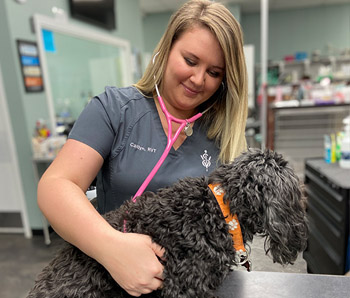Sago palms, a popular houseplant and landscaping plant, grow in tropical and subtropical climates just like here in the southeast United States. Many homes in these areas have sago palms growing in their yards or in neighboring areas. These palms have other common names such as Coontie Palm, Cardboard Palm, cycads, and zamias. This plant resembles palm trees, but is much smaller. They have a brown trunk that is sturdy with shiny olive green fronds. At full growth they are typically 8 to 15 feet tall. Did you know: these plants are deathly toxic to pets?

It is becoming more well known with the help of social media, that pets need to be kept away from these plants. The toxin within these plants is called cycasin and there is a higher concentration of this toxin in the seeds, however the rest of the plant contains some smaller concentrations as well. Keep in mind, the entire plant is toxic, not just the seeds!
When a cat, dog, or horse ingests any part of the sago palm, you can begin to see symptoms in as soon as 15 minutes or as long as several hours after. The cycasin toxin attacks the liver and gastrointestinal tract. Gastrointestinal symptoms can include vomiting and diarrhea (with or without blood). Signs of hepatic (liver) failure include abdominal pain, icterus (yellowing of the skin, gums, and sclera – the white part of the eyeball), weakness, lethargy, seizures, and coma.
There is no antidote or specific medication to treat sago palm toxicity. Instead, your veterinarian can begin treatment with medications and fluids to help flush the body of the toxin and also to provide symptomatic relief (e.g. reduce nauseousness). Your pet may need hospitalization from a minimum of a couple days to over a week to attempt to recover from ingestion.
Laboratory tests may begin showing abnormalities between 24 and 48 hours after ingestion. Important things to monitor include liver enzymes, coagulation factors (blood clotting ability), total bilirubin (yellow pigment), total protein, and blood glucose (blood sugar level). With sago toxicity there will be an increase in the liver enzymes as the liver becomes damaged, prolonged clotting times (bruising may be obvious), increased bilirubin level from the liver damage (causing the yellowing of skin), decrease in protein levels, and decrease in blood sugar.
Time is of the essence when treating sago palm toxicity. It is critical that you take your pet to receive immediate medical care if you saw your pet eat any part of a sago palm, regardless if they are showing symptoms. The earlier the treatment the better, but even with extensive treatment, sago palm toxicity can be fatal.

Author:
Caitlyn, RVT
Ph: (912) 721-6410
Contact Us
